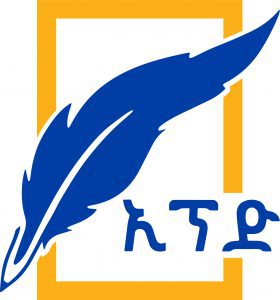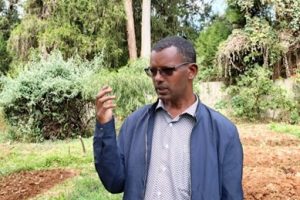
In the world of rapidly advancing technology, countries around the globe are recognizing the importance of digital transformation to drive economic growth and innovation. Ethiopia is no exception, with its ambitious ‘Digital Ethiopia Strategy’ paving the way for a major shift in the country’s digital landscape.
The Digital Ethiopia Strategy is a comprehensive roadmap that aims to leverage technology and innovation to propel Ethiopia into a digital era. With a focus on enhancing digital infrastructure, promoting digital literacy, and fostering a thriving digital economy, the strategy aims to position the country as a key player in the global digital landscape.
Recently, the Ministry of Innovation and Technology (MoIT) has disclosed that the implementation of the Digital Ethiopia 2025 Strategy has led to a significant increase in the number of internet users. The Strategy has already exceeded 42 million internet users.
By addressing the existing gaps of the strategy and building an inclusive digital economy, the Ministry has revealed that the Digital Ethiopia 2025 Strategy is under preparation.
State Minister of Innovation and Technology, Yishurun Alemayehu (PhD) told local media that the Digital Ethiopia 2025 Strategy, aligned with Homegrown Economic reforms, has accelerated national reform efforts.
Over the past four years, substantial progress has been made in the implementation of the Digital Ethiopia 2025 Strategy, he said.
Among the key initiatives that have driven the sector’s growth, the liberalization of the ethio telecom sector, issuing 10% of shares to private investors, has helped the digital sector to expand very fast, the State Minister said.
Accordingly, he said the implementation of Digital Ethiopia 2025 Strategy has raised internet users from 17 million to 42 million.
Furthermore, the strategy also fostered accessibility of electricity, development and number of additional data centers by both the government and the private sector.
“When the Digital Ethiopia 2025 Strategy was first launched, there were approximately 17 million telecom and internet users. Today, that number has more than doubled to over 42.5 million. Alongside, access to electricity services has also seen significant improvements.
The government has built large-scale data centers, and private sector investments have contributed to the construction of three-level data centers,” the State Minister emphasized.
The establishment of high-capacity data centers in the ICT Park has created favorable conditions for both domestic and foreign investors to participate in the sector.
He also noted that the activities carried out in the ICT Park over the past four years have fostered a conducive environment for investment, job creation, talent development, and the exchange of knowledge.
He added, “Efforts have been made to provide numerous government services online and to date, over 800 government services have been launched and are available for use. In addition, progress has been made in developing electronic commerce with an e-commerce strategy already in place and the government has also prepared digital government and e-government strategies, both of which will soon be approved and implemented”.
The government has launched the 5 Million Ethiopian Coders program to build a digitally skilled society, he recalled.
Moreover, the country is charting a path towards a digitally inclusive future with the rollout of its five-year strategy, designed to bridge technological gaps and ensure equitable access to digital resources for all citizens, including underserved communities.
Accordingly, a Social Dialogue on an Inclusive and Transformative Digital Strategy, co-organized by Ethiopia’s Ministry of Innovation and Technology (MINT) and the International Labor Organization (ILO), was held; with funding from the Dutch Government.
The event brought together key stakeholders, including government officials, workers’ unions, and employer associations, to validate Ethiopia’s five-year national digital inclusive strategy.
The State Minister highlighted the transformative potential of digital technologies for Ethiopia’s growth and inclusion.
The digital revolution is reshaping our industries, societies, and the way we live and work today, He noted, emphasizing the need to bridge the digital divide.
He described the strategy as a roadmap to transform Ethiopia’s digital landscape, with ambitious goals such as expanding internet access from the current 35% of the population to significantly higher levels, ensuring affordability, and fostering digital literacy and entrepreneurship.
The strategy also prioritizes the inclusion of marginalized groups, including refugees and Internally Displaced Persons (IDPs).
Yishurun stressed, “No one should be left behind… whether local, host community, or refugee.”
The strategy aligns with Ethiopia’s vision of using technology as a force for social justice, bridging economic, educational, and social divides.
Yishurun pointed out that partnerships with the private sector and international organizations are critical for overcoming these obstacles.
“Digital inclusion is not just about technology; it is about people,” Yishurun reminded the audience, urging them to actively contribute to shaping Ethiopia’s digital future.
Chief Technical Advisor for the ILO, Stephen Opio, also highlighted the importance of partnerships in Ethiopia’s digital transformation.
“We are implementing several programs to facilitate access to education and training, employment with dignity, and protection for refugees and host communities,” he said.
Opio praised Ethiopia’s progress, noting that the digital strategy is on track to bridge the digital divide and scale up implementation.
The Dutch Government, represented by the Deputy Head of Cooperation Sondaal Tiest, reaffirmed commitment to supporting Ethiopia’s digital inclusion goals.
Tiest emphasized the importance of aligning international interventions with Ethiopian priorities, such as integrating refugees and IDPs into national strategies.
The overarching goal is to strengthen the resilience and self-reliance of refugees, IDPs, and vulnerable host communities, he explained.
Both Ethiopian and international speakers acknowledged the challenges ahead, including infrastructure deficits, affordability issues, and regulatory barriers.
The forum marked a critical step in finalizing Ethiopia’s five-year digital inclusion strategy, setting the stage for a more equitable, connected, and prosperous nation. With strong support from stakeholders and international partners, Ethiopia is poised to become a model for inclusive digital transformation in the region.
In sum, the Digital Ethiopia Strategy is a bold and ambitious initiative that is driving significant change in the country’s digital landscape. One of the key pillars of the Digital Ethiopia Strategy is the improvement of digital infrastructure. This includes expanding access to high-speed internet, upgrading mobile networks, and increasing the availability of digital services across the country. By enhancing digital infrastructure, Ethiopia is laying the foundation for a more connected and technologically advanced society.
BY TEWODROS KASSA
THE ETHIOPIAN HERALD FRIDAY 27 DECEMBER 2024




